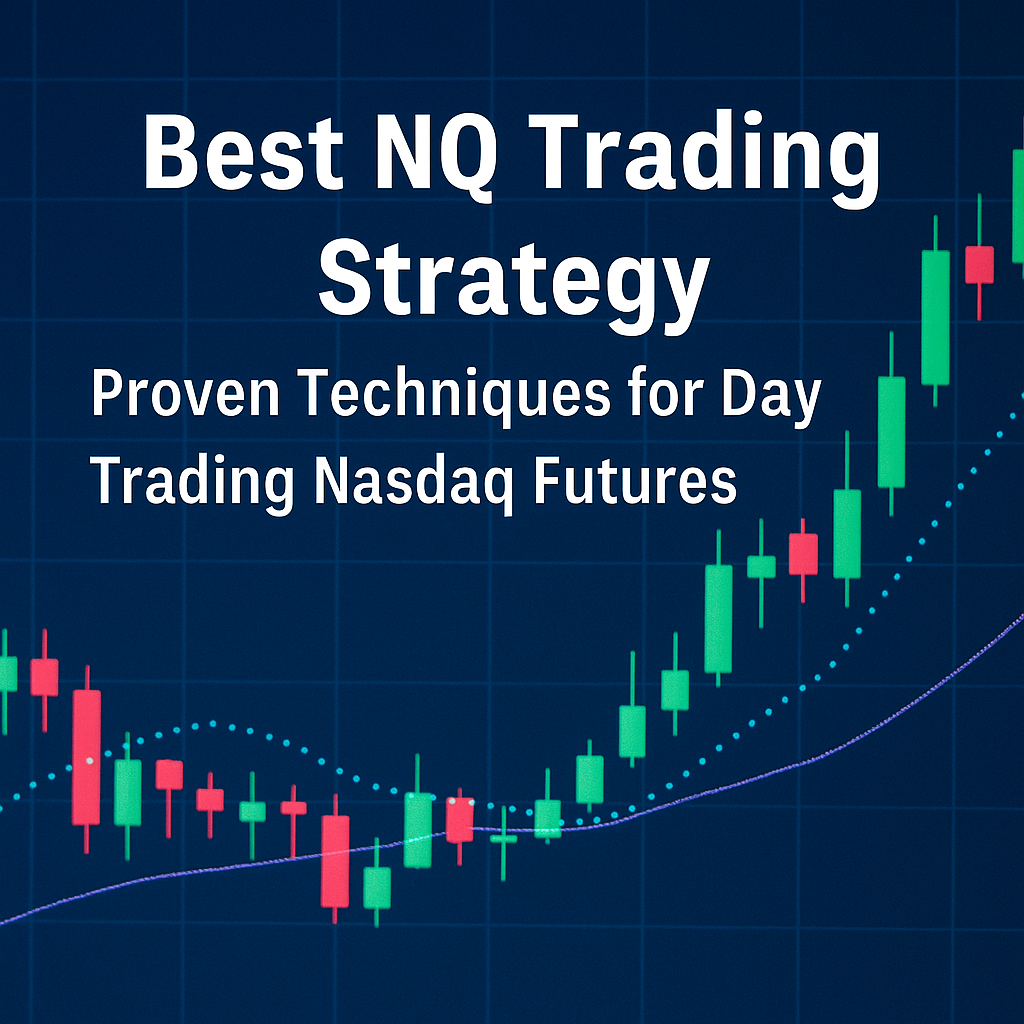Best NQ Trading Strategy: Proven Techniques for Day Trading Nasdaq Futures
The Nasdaq futures market (NQ) is one of the most actively traded instruments in the world. Its volatility and liquidity attract professional traders and scalpers alike — but to succeed, you need a solid, repeatable strategy. Whether you’re a beginner or a seasoned trader, mastering an NQ futures strategy is essential for consistent profits.
In this guide, you’ll discover the best NQ trading strategy setups for scalping and intraday trades, and how to build an edge when day trading Nasdaq futures.
Why Trade NQ Futures?
NQ futures, based on the Nasdaq-100 index, offer several advantages:
-
High volatility = more opportunity
-
Low margin requirements (especially with Micros: MNQ)
-
Strong movement during US sessions
-
Tradable nearly 24 hours per day
Consequently, they’re ideal for both day traders and scalpers — if you have a proven system.
Key Elements of the Best NQ Trading Strategy
To succeed, the best NQ trading strategy typically includes:
-
Trend Context
Identify whether the market is trending or ranging using:-
50 EMA or VWAP
-
Market structure (higher highs/lows)
-
-
Liquidity Zones
NQ often reacts to:-
Previous day high/low
-
Opening range breakout (first 30 minutes)
-
Pre-market structure
-
-
Order Flow Confirmation
This is where most traders go wrong. Order flow tools such as the footprint chart, delta, and imbalances allow you to see where buyers or sellers are stepping in — in real time. -
Risk Management
Keep risk per trade fixed (e.g., 1%) and maintain a risk-reward ratio of at least 1:1.5. -
Time Windows
Focus on high-volume periods like:-
NY Open (9:30–11:00 AM EST)
-
Power hour (3:00–4:00 PM EST)
-
NQ Scalping Strategy (Quick Hits in High Volatility)
If you’re looking for a reliable NQ scalping strategy, here’s a simple but powerful setup:
Setup: VWAP Rejection + Footprint Imbalance
-
Wait for price to test VWAP during a trend
-
Look for a 3+ stacked imbalance on the footprint chart
-
Enter in direction of the trend with tight stop
-
Target: previous swing or 4–6 points
Why it works:
Scalping Nasdaq futures requires speed and conviction. VWAP is a strong institutional level, and when combined with order flow confirmation, it increases precision significantly.
Tools You’ll Need
To implement this NQ futures strategy properly, make sure you use:
-
A Futures Broker with low commissions and fast execution (like NinjaTrader, Tradovate, or Tradeovate with QuantTower)
-
Order Flow Platform such as ATAS, Bookmap, or Sierra Chart
-
Reliable data feed (e.g., Rithmic or CQG)
Common Mistakes in Scalping Nasdaq Futures
-
Overtrading: Stick to 1–3 A+ setups per session
-
No plan: Every trade should follow a repeatable system
-
Ignoring context: Scalping against structure without confirmation leads to false entries
Furthermore, always journal your trades to refine and build confidence in your approach.
Want to Learn Order Flow for NQ?
Understanding order flow is the fastest way to improve execution and stop second-guessing your trades.
If you’re serious about mastering footprint charts, delta, imbalances, and pressure zones:
👉 Join the Orderflow Trading Masterclass
This program is specifically designed for futures traders who want to level up their performance in markets like NQ and MNQ.
Final Thoughts
If you want to dominate day trading Nasdaq futures, your edge needs to be sharp. A well-defined NQ scalping strategy, built on market structure, VWAP, and real-time order flow, can give you a significant advantage — especially during volatile sessions.
Keep your risk small, your rules simple, and your mindset sharp.
Ready to scale your trading and get funded?
👉 Beat the Prop Firms Masterclass









